”In the future, the industry will confront a philosophical divide: Should flavor remain an artisanal craft, or evolve into a programmable sensory utility? While AI promises unprecedented efficiency, the human capacity for cultural storytelling and emotional resonance will define premium brands. Successful flavor houses will hybridize—employing AI “Flavor Architects” for mass customization while retaining Master Sommelier-style human curators for luxury experiences. Those balancing algorithmic precision with anthropological depth will dominate the $2.3T flavor economy of 2045.
Dr. Luke J.W. HaffendenChief Flavourist @ Mosaic Flavours Montreal
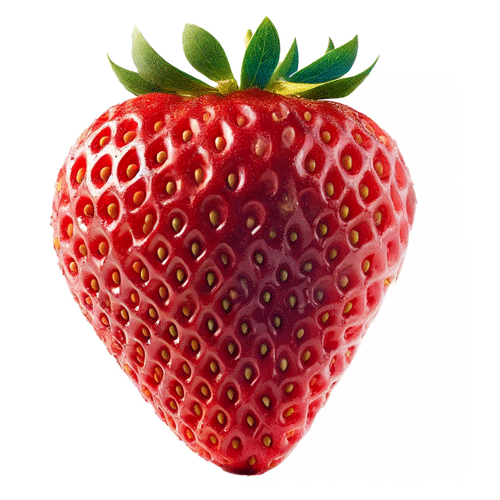
The Evolution, Current State & Opportunities for Flavour Houses
Flavour houses have transformed from ingredient suppliers to strategic innovation partners, playing a critical role in shaping the future of food and beverage. The industry is now driven by a combination of AI-powered innovation, health-conscious formulations, sustainability, and cross-cultural flavour fusion.
AI and Data-Driven Flavour Innovation
The adoption of AI and predictive analytics has accelerated the pace of flavour development. AI is now capable of analyzing consumer preferences in real time, predicting emerging flavour trends, and generating unexpected but highly appealing combinations. This shift has compressed product development timelines, allowing brands to test and launch new flavours within weeks rather than months. Flavour houses that leverage AI can offer hyper-personalized solutions, meeting evolving consumer demands with precision.
Functional & Health-Focused Flavours
Health and wellness remain at the forefront, with growing demand for functional ingredients such as adaptogens, probiotics, and botanical extracts. Consumers increasingly seek flavours that support immunity, digestion, and mental well-being, creating opportunities for flavourists to collaborate with wellness brands. Functional beverages, snacks, and desserts infused with ingredients like matcha, hibiscus, turmeric, and reishi mushrooms are expanding beyond niche markets into the mainstream.
Sustainability and Ethical Sourcing as Competitive Advantages
Sustainability is now a core brand strategy, with increasing demand for upcycled ingredients, regenerative agriculture, and lab-grown flavour compounds. Flavour houses that focus on zero-waste solutions, plant-based alternatives, and ethically sourced extracts are positioning themselves as industry leaders. Transparency in sourcing has become a key differentiator, with single-origin flavour extracts and natural fermentation techniques gaining consumer trust.
The Rise of Cross-Cultural & Hybrid Flavours
Consumers are increasingly drawn to multi-layered, globally inspired flavours that blend traditional and modern influences. The growing appeal of spicy-sweet (“swicy”) and umami-forward combinations has led to the success of fusion products such as miso caramel, gochujang peanut butter, and tamarind margaritas. As cultural boundaries blur, flavour houses have the opportunity to develop customized regional adaptations that cater to a globalized palate.
The New Era of Limited-Time and Viral Flavours
Social media has redefined the speed and impact of flavour trends, turning limited-time offers into major revenue drivers. Viral flavours, often influencer-driven or culturally relevant, now dictate product development cycles. The demand for unique, short-term offerings—such as croissant-infused vodka, mustard Skittles, or spicy honey beverages—highlights the need for agility in flavour formulation. Flavour houses that stay ahead of digital trends can capitalize on real-time consumer interests.
AI-Powered Precision & Sustainable Innovation
Advancements in machine learning and precision fermentation are enabling the creation of rare or environmentally intensive flavours without traditional sourcing challenges. Flavour houses can now replicate complex flavour molecules, such as cultivated saffron and plant-derived umami enhancers, providing cost-effective and sustainable alternatives to conventional ingredients.
The Future of Flavour Houses
The industry is at a turning point, where flavour houses must integrate AI-driven development, sustainability initiatives, and cultural trend analysis to remain competitive. The ability to predict, personalize, and rapidly produce new flavour experiences is key to driving the next wave of food and beverage innovation.
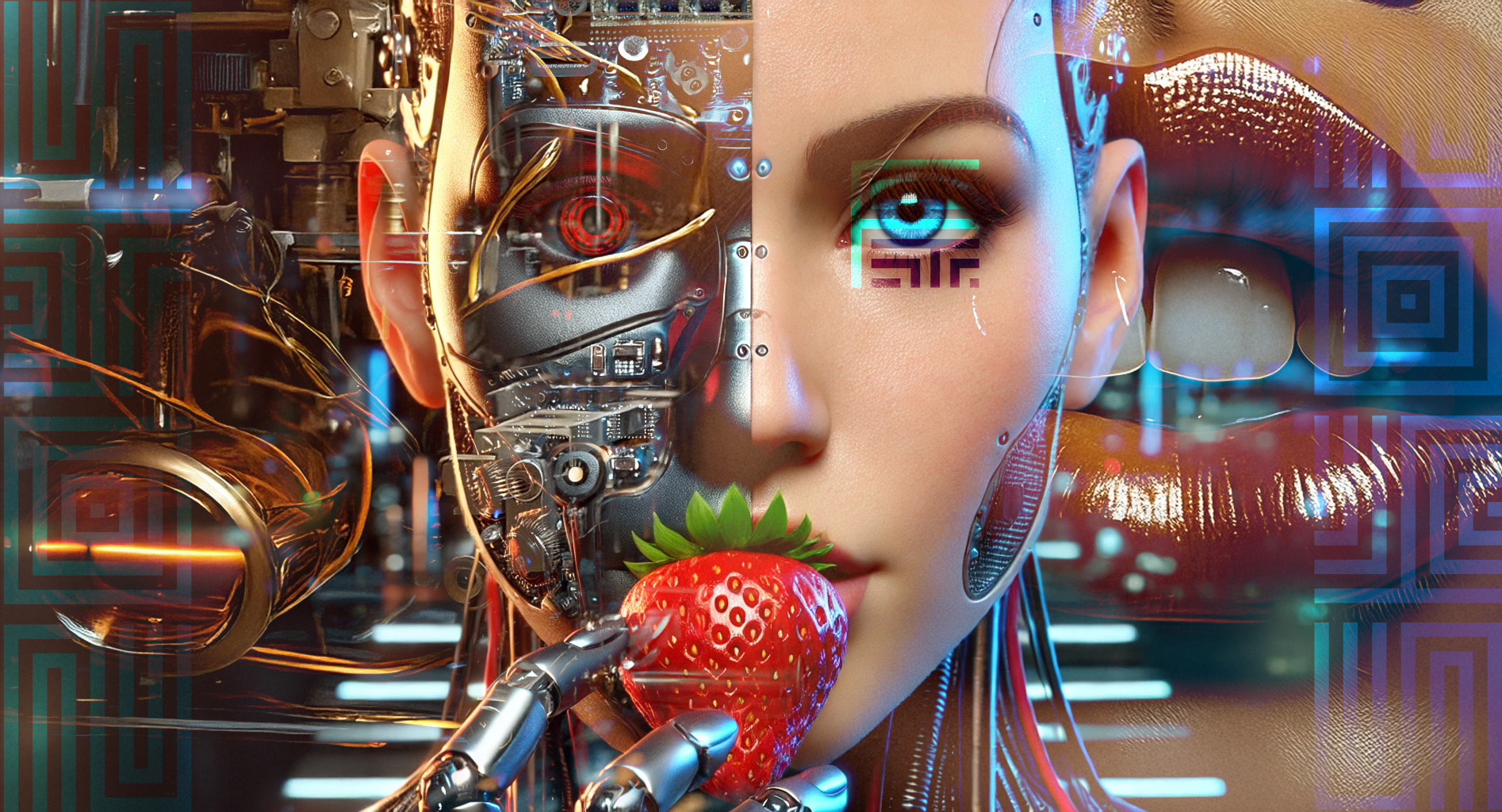
Predicting the Future of the Flavour Industry
To explore how flavor might evolve by 2045, we asked two different AI models to paint distinct visions of the future F&B landscape. Projection A depicts a climate-resilient, hyper-personalized world—think instant mood-based flavor adjustments, lab-grown rare tastes, and immersive dining experiences that replace traditional restaurants. Projection B, meanwhile, puts AI in the driver’s seat as a creative force, blending neurogastronomy and DNA-driven customization to forge a $2.3T “taste economy.” While they differ in approach, both highlight how AI, sustainability, and personalization will reshape the way we eat, drink, and delight in flavor.
The Future of Flavour Houses & the F&B Industry (2045 Projection A)
Picture a world in 2045 where your morning latte automatically adjusts its sweetness to match your mood, and extinct flavors from centuries past reappear in your kitchen, grown in sleek tabletop bioreactors. Driven by AI “taste intelligence,” climate resilience, and zero-waste innovation, Projection A envisions the F&B industry as an immersive, health-optimized playground—where restaurants vanish, meals get 3D-printed to your exact DNA, and flavor houses morph into labs of sensory wizardry.
AI & Hyper-Personalized Flavours: The Era of “Taste Intelligence”
What’s Happening Now
- AI-driven flavour formulation is already predicting successful combinations.
- Machine learning is personalizing taste preferences for consumers.
By 2045
- AI-powered taste optimization will create dynamic, adaptive flavours that adjust in real time to a person’s mood, health, and genetic profile.
- Taste Intelligence Systems (TIS) will analyze a person’s microbiome, hormonal levels, and past preferences to create real-time flavour modifications in food and beverages.
- Consumers will have access to personalized flavour generators, allowing them to alter the taste of their meals instantly.
Example:
A drink that adjusts its acidity, sweetness, or bitterness based on real-time biomarkers from a wearable device.
Climate-Resilient & Lab-Grown Flavours
What’s Happening Now
- Climate change is disrupting natural crops (vanilla, cacao, coffee).
- Precision fermentation and bioengineering are creating lab-grown versions of rare flavours.
By 2045
- Most traditional crops will be phased out due to environmental pressures, replaced by lab-grown, engineered flavour molecules that are indistinguishable from natural extracts.
- Advanced fermentation systems will allow consumers to grow their own flavour compounds at home, eliminating dependency on agriculture.
- Exotic and extinct flavours, like wild cacao from the Amazon or pre-colonial herbs, will be digitally reconstructed.
Example:
AI-curated vanilla extracts from gene-sequenced extinct orchids will be grown on demand in home flavour pods.
Zero-Waste, Upcycled, & Regenerative Flavour Systems
What’s Happening Now
- The food industry is upcycling food waste (fruit peels, spent grains).
- Flavour houses are exploring regenerative agriculture.
By 2045
- Food production will be nearly 100% waste-free, as AI-driven fermentation and molecular gastronomy repurpose every edible part of ingredients into secondary flavour compounds.
- Cities will have bioreactors that break down food scraps and convert them into custom flavour concentrates.
- Companies will launch “Regenerative Flavours”, using fungal, bacterial, and yeast systems to create entirely new taste profiles from discarded plant matter.
Example:
Citrus-flavoured water enhanced from discarded lemon rinds, optimized through AI fermentation.
 Multisensory & Immersive Flavours
Multisensory & Immersive Flavours
What’s Happening Now
- Experiential dining is expanding (smoke-infused cocktails, edible fragrances).
- Flavourists are working with neurology and psychology to enhance taste perception.
By 2045
- Flavours will be tied to immersive experiences, with AI-controlled scent projection, auditory taste enhancement, and holographic dining settings altering how food is perceived.
- Memory-Activated Flavours will be mainstream—certain flavour molecules will be able to trigger emotional recall, transporting a diner to a specific moment in time.
- Flavour Nebulizers will allow users to “inhale” flavour experiences instead of eating traditional food.
Example:
A virtual “countryside picnic” where flavour mist recreates the aroma and taste of fresh strawberries, grass, and spring air.
The Death of Traditional Restaurants & The Rise of Customizable Food Systems
What’s Happening Now
- Ghost kitchens and AI-generated menus are on the rise.
- Consumers want full control over their food experiences.
By 2045
- Restaurants as we know them will cease to exist. Instead, flavour customization kiosks and smart kitchens will allow diners to tailor every aspect of their meal.
- AI “Flavour Tailors” will suggest meals based on DNA, mood, and metabolic needs.
- Personalized 3D-printed meals will be the norm, with hyper-detailed flavour infusions that change bite-by-bite.
Example:
Sushi that digitally adapts in real time to your palate, switching from spicy to umami-rich based on sensory feedback.
Beyond Food: Flavours in Medicine & Mental Health
What’s Happening Now
- Certain flavour compounds impact mood and cognitive function.
- Pharmaceuticals are starting to integrate taste masking & flavour enhancements.
By 2045
- Flavours will be used as medical therapy—functional flavour systems will influence dopamine, serotonin, and cortisol levels to control stress, focus, and sleep.
- Neuroflavours will be developed to enhance memory, reduce anxiety, or even induce lucid dreams.
- Taste-based pharmaceuticals will replace pills, allowing medication to be absorbed directly via flavoured molecular compounds.
Example:
A calming mint-hibiscus neuroflavour mist that naturally reduces stress by modulating brain chemistry.
Hyper-Localized & DNA-Based Flavour Innovation
What’s Happening Now
- The rise of hyper-local, terroir-driven flavour preferences.
- DNA-based nutrition is influencing food trends.
By 2045
- Flavour DNA Mapping will allow people to unlock the exact tastes they are genetically predisposed to enjoy.
- Regional “Taste Clusters” will redefine global cuisine—flavours will be crafted for micro-communities rather than national markets.
- People will be able to synthesize regionally extinct flavours from digital databases of ancient foods.
Example:
A “lost flavour” project that brings back the exact spices and fermentation profiles of a 2,000-year-old Mayan chocolate drink.
The Role of Flavour Houses in 2045
Flavour houses will no longer be just suppliers—they will become technological, sensory, and genetic innovators. The industry’s biggest players will:
- Develop AI-driven, personalized flavour recommendations
- Lead zero-waste, regenerative flavour creation
- Integrate flavour-based wellness & medical solutions
- Pioneer synthetic, lab-grown taste systems
- Create multisensory, immersive dining experiences
Final Takeaway: The Future of Flavour is Intelligent, Sustainable & Experiential
By 2045, flavours won’t just be tastes—they will be experiences, therapies, and fully customizable technologies. The power of AI, climate resilience, bioengineering, and neuroscience will reshape the very nature of eating and drinking, making food a fully interactive, multisensory, and health-optimized experience.
The Future of Flavour Houses & the F&B Industry (2045 Projection B)
Fast-forward two decades, and watch as AI leaps from supportive sidekick to autonomous flavor architect—brewing custom tastes based on your genetic code, and even analyzing your brainwaves to tweak recipes in real time. In Projection B, flavor becomes the ultimate frontier of personalization, fueled by neurogastronomy, DNA-driven nutrition, and sustainability breakthroughs that unearth exotic ingredients from data-rich rainforest canopies. Here, human artistry marries algorithmic genius to craft a $2.3T taste ecosystem, where each bite is precision-engineered yet undeniably soulful.
-
AI as Co-Creator: From Predictive Tools to Autonomous Flavor Architects
AI is transitioning from a data-crunching assistant to a creative partner in flavor design:
- Generative Flavor Systems: By 2030, AI will autonomously propose novel molecular combinations using quantum computing simulations, such as CRISPR-edited yeast strains that produce extinct botanicals (e.g., Silphium, an ancient Roman herb) 741.
- Real-Time Market Adaptation: Tools like Ai Palette’s TrendGPT will predict regional taste shifts hourly, adjusting production lines dynamically—imagine a Japanese snack factory reformulating matcha intensity based on TikTok virality metrics 1719.
- Error-Reduction Networks: Neural networks trained on 100+ years of flavorist notebooks will flag stability issues in formulas, reducing trial cycles by 93% compared to 2025 benchmarks 144.
Case Study: Firmenich’s D-Lab 2.0 now uses adversarial AI networks—where one AI generates radical concepts while another critiques based on cultural acceptability—yielding flavors like smoked mango with activated charcoal resonance for Gen Z smokehouse snacks 112.
-
Multisensory Domination: The Neurogastronomy Revolution
The 2030s will see flavor transcend taste buds through sensory hijacking technologies:
- VR Flavor Amplification: Augmented reality headsets like FlavorLens AR overlay digital terroir narratives—drinking water while VR shows Alpine springs makes it taste “crisper” (+22% perceived freshness in trials) 2752.
- Haptic Taste Interfaces: MIT’s DigiGust fork uses microcurrents to simulate umami richness in plant-based meats, tricking trigeminal nerves 38.
- Scent-Emitting Packaging: Givaudan’s AromaBloom labels release adaptive top notes—coffee bags that excrete caramelized hazelnut aromas when gripped, boosting purchase intent by 37% 2231.
Emerging Trend: By 2040, neurofeedback flavoring will adjust recipes in real-time based on EEG-read brainwaves, creating mood-specific snacks (e.g., anxiety-reducing chamomile-chocolate hybrids) 3233.
-
Precision Flavors: The Genomic Personalization Frontier
DNA and microbiome analytics will drive biometric flavor tailoring:
- **Nestlé’s MyDNA Menu: Building on their 2025 Japan pilot, this platform cross-references 12,000 genetic markers to create protein bars optimizing individual folate absorption—reducing anemia risk in 89% of users 943.
- Gut Microbiome Syncing: Startups like FloraTaste use stool-sample AI to recommend prebiotic flavors that enhance users’ unique bacterial profiles—imagine a yogurt adjusting its citrus notes to boost Bifidobacterium growth 3638.
- Epigenetic Aging Reversal: Flavors laced with NRV-5 peptides (triggering sirtuin pathways) could make “anti-aging” ice cream a $170B market by 2035 746.
Ethical Flashpoint: The 2032 Genetic Flavor Privacy Act will mandate blockchain tracking for DNA-derived flavor data, penalizing unauthorized use of biometric taste fingerprints 4247.
-
Sustainable Disruption: AI-Optimized Regenerative Practices
- Biodiversity Mining: AI scours rainforest canopies via satellite to identify undocumented fruits—like the Amazonian Yurare berry (tangy-sweet, 300% more vitamin C than acerola) now used in Nestlé’s carbon-negative sodas 653.
- Waste-to-Taste Pipelines: Startups like ReFlavor deploy fungal AI to convert agricultural byproducts into premium vanillin—diverting 12M tons of waste annually by 2030 2541.
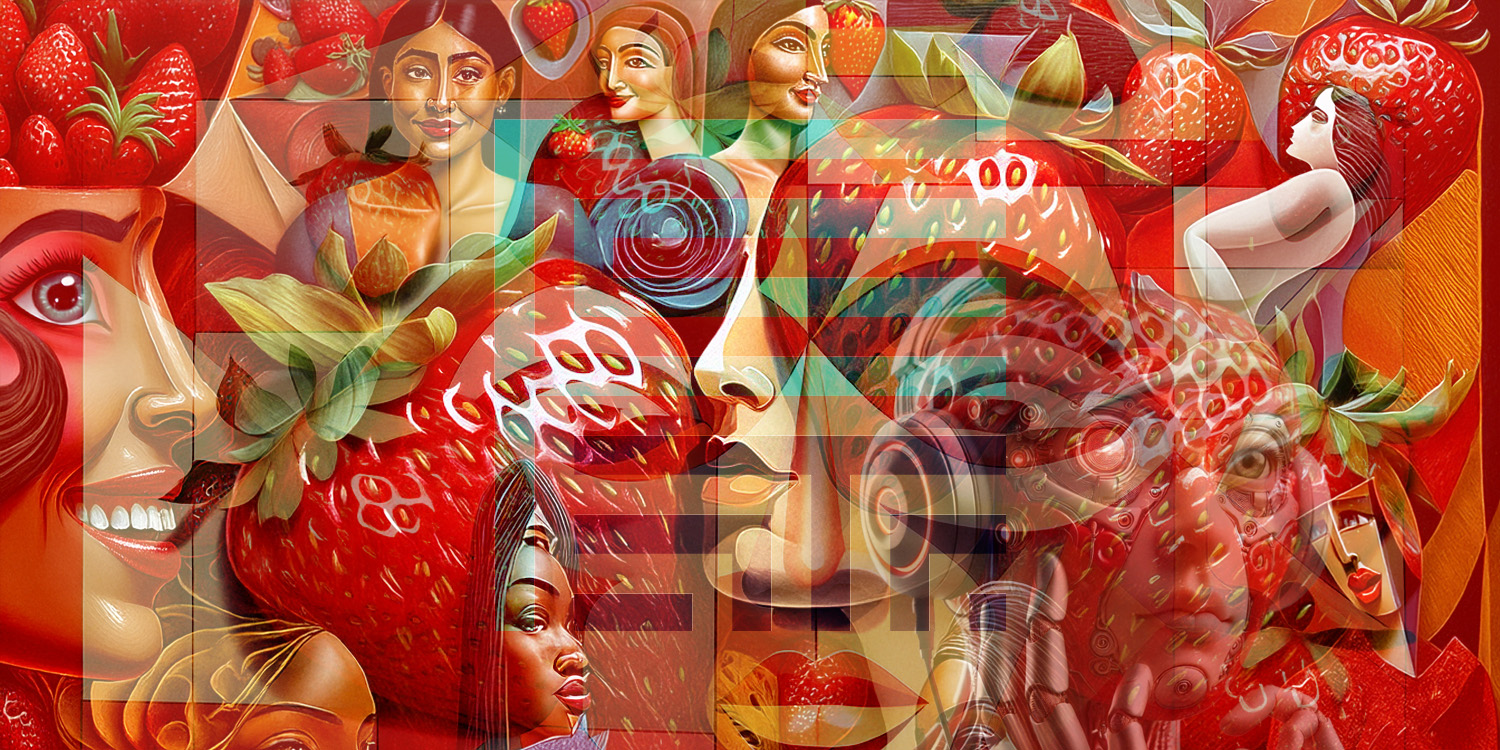
-
The Human Paradox: Flavorists as Neuro-Creative Curators
While AI handles 80% of technical tasks by 2040, human experts will pivot to:
- Cross-Modal Artistry: Designing flavors that synesthetically “harmonize” with specific musical keys or VR environments (e.g., a bergamot note that intensifies when paired with B-minor chords) 2754.
- Ethical Flavor Governance: Leading taste councils to audit AI for cultural appropriation risks—blocking a 2031 AI-proposed “AI-generated Māori hāngī smoke flavor” deemed inauthentic 119.
Strategic Roadmap for Flavor Houses (2025–2045)
Phase |
2025–2030 |
2030–2040 |
2040–2045 |
| AI Integration | Predictive trend modeling | Autonomous flavor generation | Emotion-responsive AI chefs |
| Sensory Tech | AR-enhanced tasting sessions | Haptic neurostimulation devices | Direct neural flavor implantation |
| Personalization | DNA-based nutrition kits | Real-time microbiome adjustment | Epigenetic age-reversal flavors |
| Sustainability | Upcycled ingredient AI databases | Carbon-negative flavor synthesis | Climate-adaptive crop optimization |
The Existential Flavor Crossroads
In the future, the industry will confront a philosophical divide: Should flavor remain an artisanal craft, or evolve into a programmable sensory utility? While AI promises unprecedented efficiency, the human capacity for cultural storytelling and emotional resonance will define premium brands. Successful flavor houses will hybridize—employing AI “Flavor Architects” for mass customization while retaining Master Sommelier-style human curators for luxury experiences. Those balancing algorithmic precision with anthropological depth will dominate the $2.3T flavor economy of 2045.
Flavour 2045: The Moral Imperative of Innovation – Leading the Change Responsibly
The future of the flavour industry is not just about technology, efficiency, and market dominance—it’s about wielding innovation in ways that respect human creativity, ethical responsibility, and the deep cultural significance of food. For centuries, flavour has been more than a commodity—it has been a connector of cultures, a trigger of memories, and a fundamental part of the human experience. As AI, automation, and biotech push the industry toward unprecedented efficiency and personalization, we must ask ourselves: How do we enhance, rather than diminish, the human element of flavour?
The Balance Between AI and Human Creativity
Artificial intelligence is now deeply embedded in flavour innovation, assisting in predictive modelling, ingredient selection, and the creation of novel taste profiles. But while AI can analyze trends, optimize formulations, and suggest pairings, it cannot truly taste, remember, or feel.
Flavour is an intersection of art, culture, and emotion. If the industry becomes too reliant on machine-generated formulations, we risk losing the soul of creativity that makes food and beverages so personal.
✅ The Ethical Imperative:
- AI should be a tool for augmentation, not replacement.
- Human intuition, sensory perception, and cultural knowledge must remain central to flavour development.
- The future should be a partnership between human creativity and machine intelligence—not a surrender to algorithms.
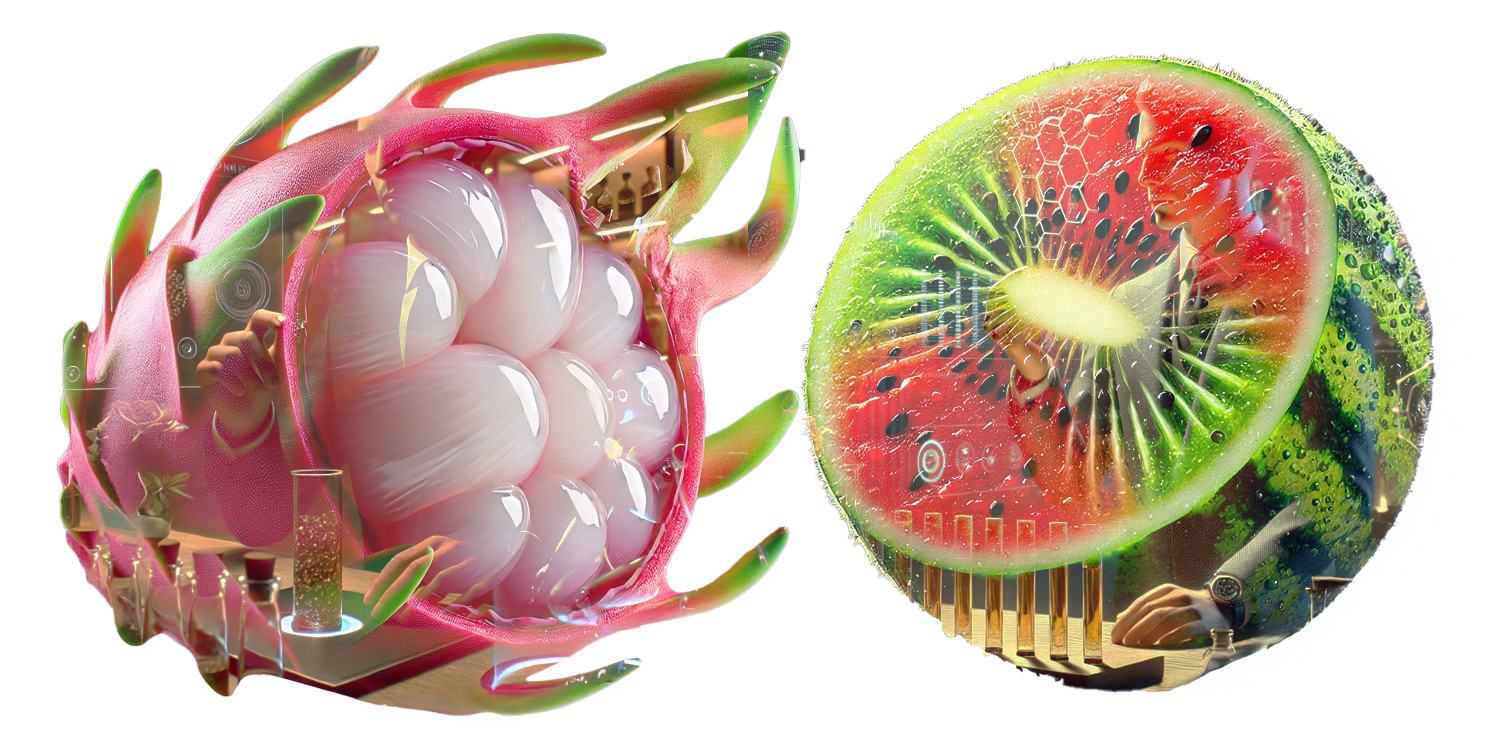 The Responsibility of Personalized Flavour Technology
The Responsibility of Personalized Flavour Technology
With the rise of DNA-based nutrition, microbiome-linked taste profiles, and AI-driven customization, flavour experiences can become hyper-personalized. Consumers may soon adjust the acidity, sweetness, or umami balance of their meals in real time—or even have food designed specifically for their genetic makeup.
But who controls this technology? If large corporations and AI-driven labs dictate what is available, could access to diverse, natural, and culturally significant flavours become restricted? Could consumers lose opportunities for discovery if AI only suggests what it “knows” they like?
✅ The Ethical Imperative:
- Accessibility and inclusivity must be built into personalized flavour technology.
- Consumers should be encouraged to explore beyond AI-generated preferences, preserving serendipity in food experiences.
- Diverse and regional specialties must be protected—AI should enhance, not homogenize, global tastes.
The Sustainability & Environmental Responsibility of Flavour Houses
Climate change, resource scarcity, and food security concerns demand a rethinking of sourcing, production, and waste management. As the industry moves toward lab-grown, precision-fermented, and bioengineered flavours, it has the power to reduce environmental impact—but also the risk of disconnecting food from nature entirely.
If all flavours become synthetic or algorithmically optimized, will consumers still value natural ingredients, traditional methods, and regional specialties? Will flavour houses prioritize sustainability, or chase biotech solutions that undermine small producers?
✅ The Ethical Imperative:
- Sustainable practices must preserve biodiversity, not just optimize production.
- Traditional farmers, spice cultivators, and small-scale producers must have a place in the future of flavour sourcing.
- The industry must commit to net-zero carbon impact, ethical sourcing, and sustainable flavour systems.
The Human Element: Taste as a Cultural & Emotional Experience
Flavour is profoundly personal and cultural. It carries history, ritual, identity, and memory. If the future of food becomes too standardized by AI, we risk stripping away the intangible emotional depth of taste—the comfort of a grandmother’s cooking, the joy of discovering a new spice, the nostalgia of a childhood favourite.
Food is more than fuel—it’s a multisensory experience that builds memories and evokes emotion.
✅ The Ethical Imperative:
- AI should learn from human experience, not erase it.
- Multisensory dining, emotional taste design, and memory-driven flavours must remain part of the industry’s evolution.
- The future of flavour should enhance human connection, not just efficiency and profit.
Leading the Change With Integrity & Vision
The next 20 years will bring extraordinary advances—AI-generated flavour replicators, immersive multisensory food experiences, and fully personalized nutrition systems. Yet progress without purpose is empty.
True industry leadership will not be about who adopts AI and biotech the fastest, but rather who uses these tools ethically, creatively, and with a commitment to the emotional, cultural, and environmental impact of food.
The future of flavour is ours to shape. Not just for efficiency. Not just for convenience. But for humanity, sustainability, and the preservation of taste as an art form that connects us all.
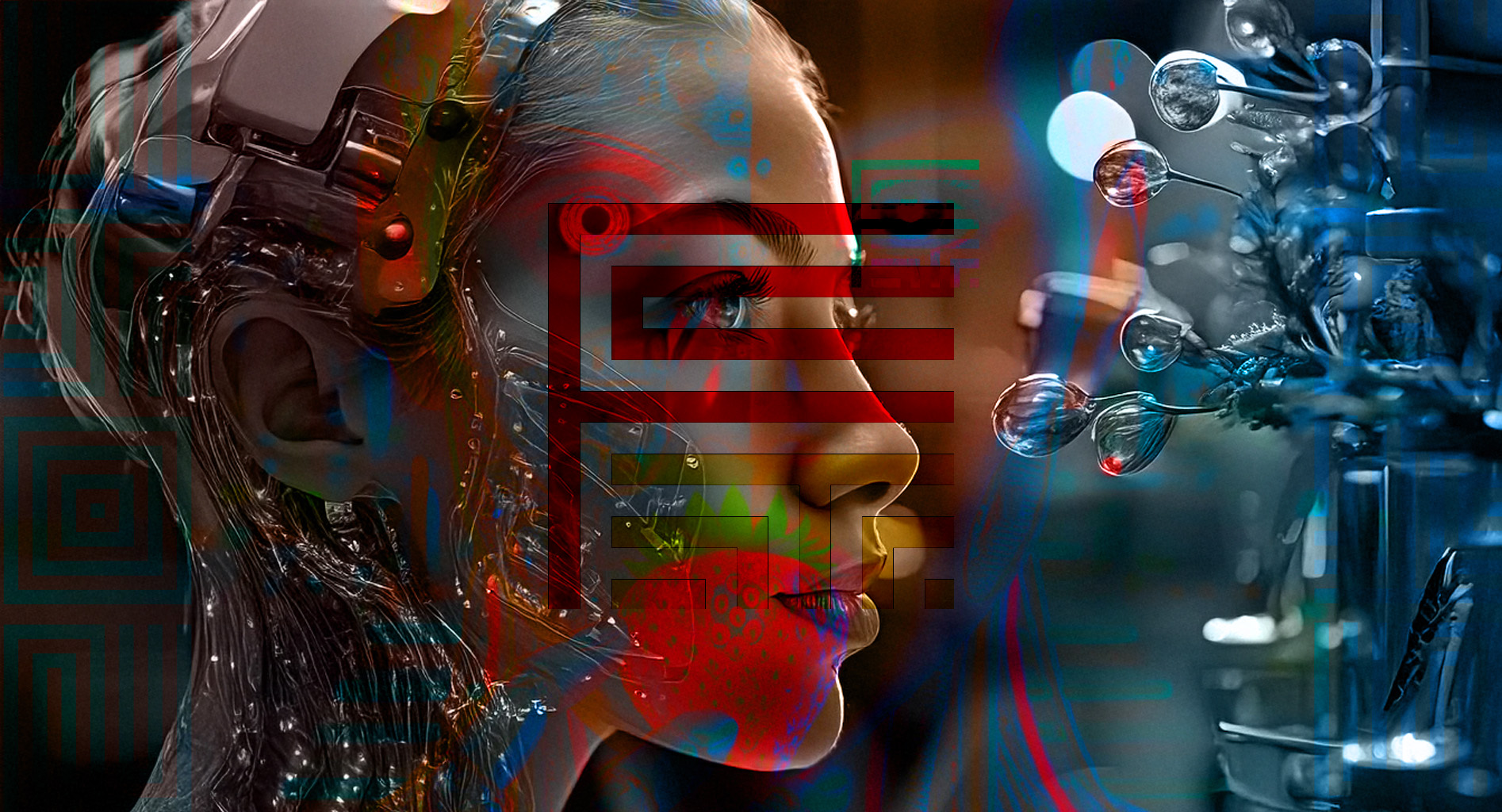
Embracing AI & Sensory Technology as a Flavorist: Leading the Revolution While Preserving the Human Element
The flavour industry is undergoing a revolution—one driven by AI, automation, electronic tongues, machine olfaction, and multisensory integration. This is no longer speculation about the future; it is happening now.
AI is actively optimizing formulations, predicting sensory interactions, and assisting in flavour creation. Electronic tongues and noses are detecting subtle taste compounds and fine-tuning ingredient stability with precision beyond human capability.
Despite these advancements, one truth remains: flavour is more than molecules and data. It is art, science, emotion, and cultural storytelling. The challenge is not whether AI and sensory technology can replace human expertise—but how flavorists can harness these tools to elevate their craft, create deeper sensory connections, and lead the industry into the next era.
AI & Sensory Tech as “Idea Generators,” Human as the Curator
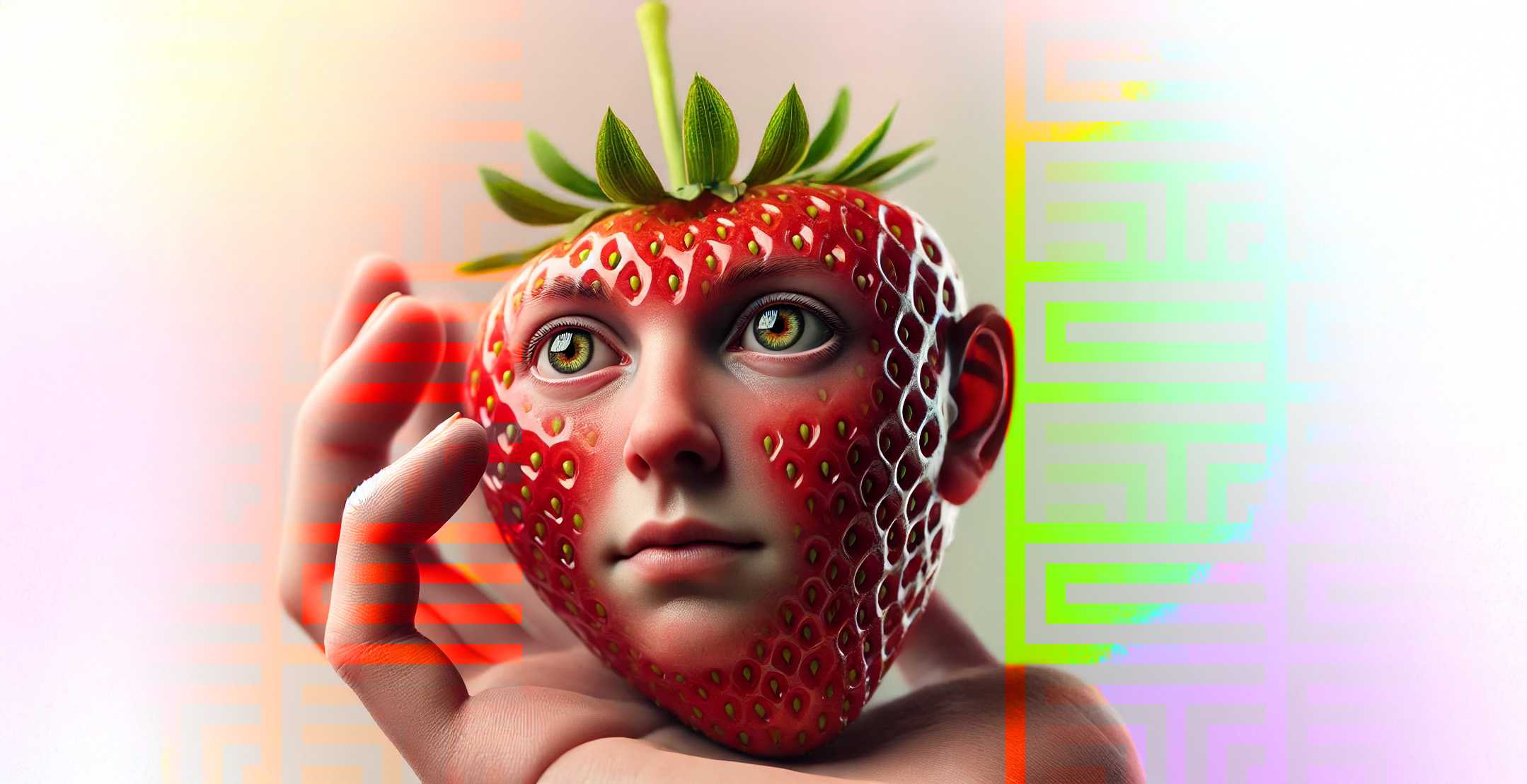 What’s Happening Now:
What’s Happening Now:
- AI suggests unconventional yet chemically sound flavour pairings (e.g., “black garlic chocolate”).
- Electronic noses detect aroma complexity, guiding more accurate R&D.
✅ The Revolution’s Impact on Flavorists:
- AI provides endless possibilities, but only human intuition, culture, and emotion can determine what resonates.
- Electronic sensory tools give data-backed insights, but flavorists must ensure balance, depth, and harmony.
What Flavorists Must Do Now:
- Use AI for brainstorming and discovery.
- Let human experience and cultural knowledge refine and finalize which ideas to pursue.
AI & Sensory Technology Are Already Streamlining Repetitive Tasks & Freeing Up Creativity
What’s Happening Now:
- AI-powered predictive modelling is replacing manual trial-and-error formulations.
- Electronic tongues detect sweetness, umami, bitterness, and aftertastes faster than human sensory panels.
- AI automates regulatory compliance and stability checks, letting flavorists focus on creative exploration.
✅ The Revolution’s Impact on Flavorists:
- Technical heavy lifting moves to AI, giving flavorists more freedom for creativity and emotional storytelling.
- Electronic sensory tools pre-screen ingredient combinations, accelerating ideation and testing.
What Flavorists Must Do Now:
- Implement AI-powered R&D tools and electronic sensory analysis to cut development time.
- Focus on pushing creative boundaries and multisensory depth.
Personalization & Hyper-Customization Have Arrived
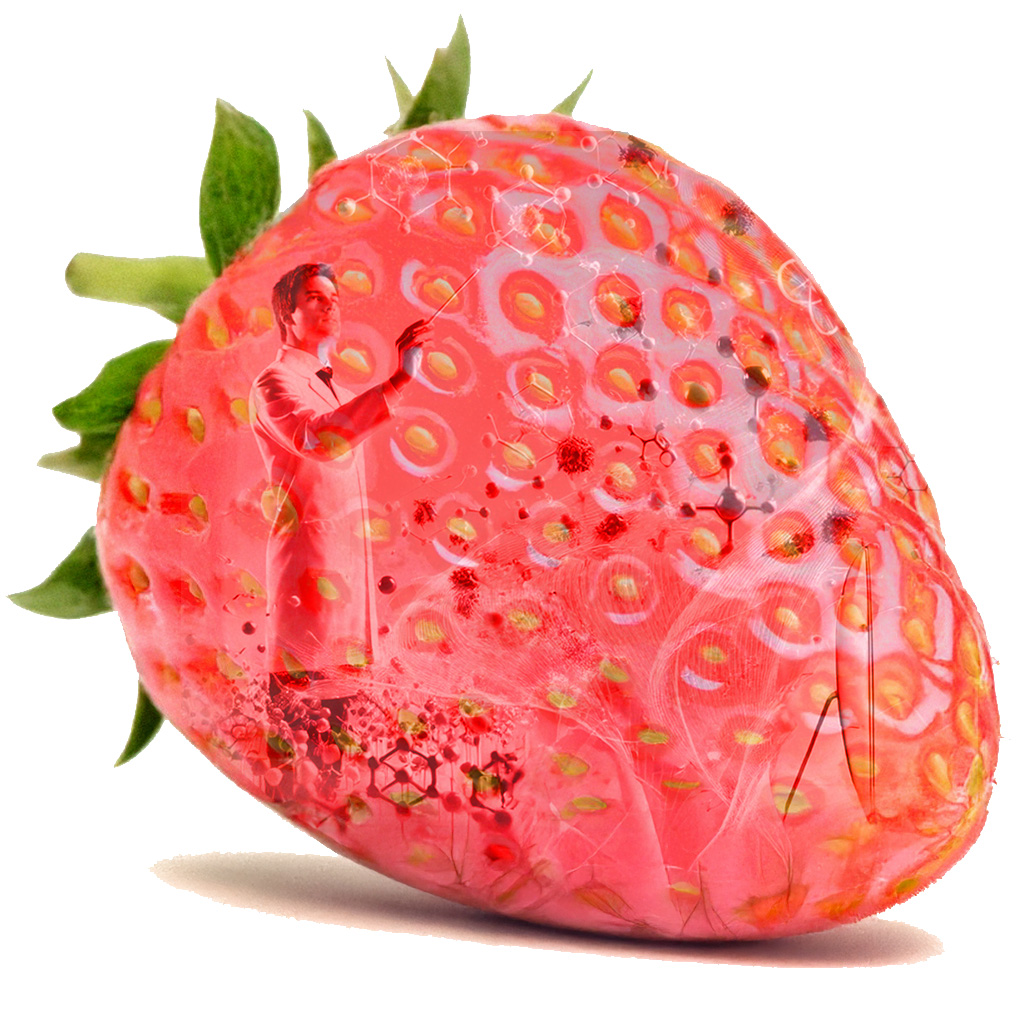 What’s Happening Now:
What’s Happening Now:
- AI-driven consumer insights tailor flavours to individual preferences in real time.
- Electronic tongues detect taste variances, enabling regionally optimized formulations.
✅ The Revolution’s Impact on Flavorists:
- Flavour is shifting from mass-market to highly personalized experiences.
- AI automates sensory adjustments, but humans oversee the emotional and cultural nuances of customization.
What Flavorists Must Do Now:
- Integrate AI-powered preference tracking and electronic taste profiling.
- Preserve cultural authenticity and variety alongside technical personalization.
AI & Predictive Formulation Are Speeding Up Innovation Cycles
What’s Happening Now:
- AI predicts ingredient interactions, sensory impact, and stability before lab testing.
- Electronic sensory tools identify off-notes and molecular interactions in seconds.
✅ The Revolution’s Impact on Flavorists:
- Instant formulation validation reduces experimental failures and shortens development timelines.
- Flavorists have more time for high-level innovation and artistry.
What Flavorists Must Do Now:
- Use AI and electronic sensory tools to refine concepts before lab formulation.
- Maintain human creativity while leveraging efficiency.
Multisensory & Emotional Experience Creation is Here
What’s Happening Now:
- AI correlates flavour perception with sound, visuals, and texture for immersive dining.
- Electronic noses detect aroma changes in different environments, optimizing flavour for specific contexts (e.g., airline meals).
✅ The Revolution’s Impact on Flavorists:
- Flavour is now about designing emotional and experiential connections.
- AI can suggest optimal sensory pairings, but only a flavorist can create truly memorable, emotionally impactful tastes.
What Flavorists Must Do Now:
- Experiment with AI-assisted multisensory design.
- Integrate sound, scent, and colour psychology into flavour development.
AI & Sensory Tech Will Never Replace Human Judgment
What’s Happening Now:
- AI detects chemical interactions but cannot experience nostalgia, cultural depth, or sensory intuition.
- Electronic tongues measure bitterness or acidity, but cannot capture how taste is shaped by personal memory and emotion.
✅ The Revolution’s Impact on Flavorists:
- Technology is changing how we create flavours, but the human ability to connect flavour with culture and memory is irreplaceable.
- Flavorists must ensure that technology enhances creativity rather than reducing it to an algorithm.
What Flavorists Must Do Now:
- Stay at the forefront of AI and electronic sensory integration, but always apply a human touch to add emotional depth.
Final Takeaways: The Flavorist’s Role in the AI & Sensory Tech Revolution
✅ AI as an Assistant, Not a Replacement
→ Let AI automate technical formulation, so flavorists can focus on artistry and emotion.
✅ Use AI for Efficiency & Speed
→ Faster ideation, formulation, and iteration = more time for multisensory storytelling.
✅ Keep Human Judgment Central
→ AI and electronic tongues/noses can suggest, optimize, and analyze, but only humans can create sensory experiences that resonate deeply.
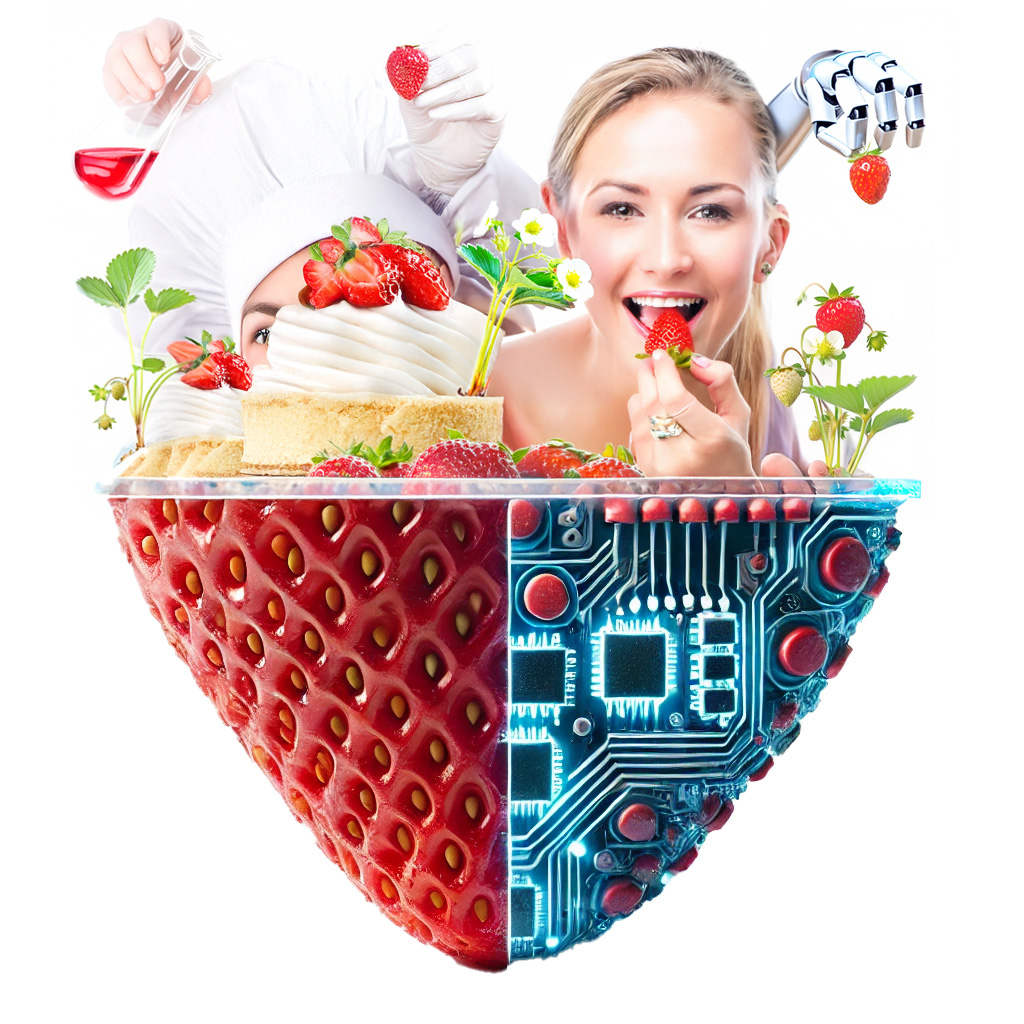
“We are no longer waiting for these changes to happen—they are here. AI, electronic tongues, and machine olfaction are already transforming how flavour is developed, analyzed, and optimized. Yet, even as machines become more precise, faster, and more capable, they will never replace the human element of flavour creation—the emotion, intuition, and personal connection that make taste meaningful. Flavorists who embrace this revolution will lead the future of taste. Those who merge science with self-expression, leverage AI while preserving artistry, and push the limits of multisensory experience will redefine what it means to create flavour in the 21st century and beyond.
Dr. Luke J.W. HaffendenChief Flavourist @ Mosaic Flavours Montreal
The revolution is here. Are you leading it?”










